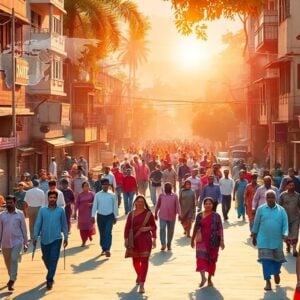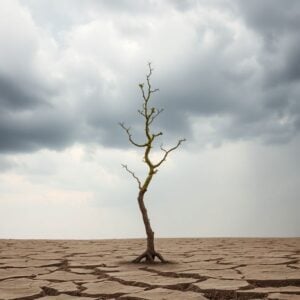Over the past decade, there has been slow but steady progress in reducing extreme child poverty worldwide. Despite this, children remain disproportionately affected, representing over half of the global population living on less than $3.00 per day, even though they account for only 30 percent of the total population. A new joint analysis by the World Bank and UNICEF, using updated global poverty lines, provides a detailed view of child poverty trends over the last ten years, highlighting who is affected, where they live, and the conditions they face.
The study measures poverty using thresholds of $3.00 per day to capture extreme monetary poverty in the world’s poorest countries and $8.30 per day for assessing poverty in countries with higher living costs. These benchmarks, adjusted for inflation and consumption patterns, offer a more accurate picture of child poverty across diverse contexts.
Globally, about 412 million children—over 19 percent of the child population—lived on less than $3.00 per day in 2024, down from 507 million, or 24 percent, in 2014. This represents nearly 100 million fewer children in extreme poverty, though the COVID-19 pandemic caused a temporary setback in 2020. At the $8.30/day threshold, nearly 66 percent of children, or 1.4 billion, remain below the poverty line, emphasizing the scale of economic vulnerability.
Regional trends reveal significant disparities. Sub-Saharan Africa remains the epicenter of extreme child poverty, with over 52 percent of children living on less than $3.00 per day, accounting for three-quarters of all children in extreme poverty globally. South Asia has seen remarkable reductions in extreme child poverty, from 25 percent in 2014 to just over 8 percent in 2024, largely driven by India. However, broader economic vulnerability persists, with nearly 85 percent of children in the region living below $8.30 per day. East Asia and the Pacific also recorded notable gains, with Indonesia reducing extreme child poverty from 26 to 7 percent between 2015 and 2024. Latin America and the Caribbean maintained low extreme poverty rates but still see more than 41 percent of children below $8.30 per day. Europe and Central Asia saw declines at the $8.30/day threshold, while the Middle East and North Africa experienced a reversal, with extreme child poverty almost doubling due to conflict and instability in countries like Yemen.
Nationally, countries such as Indonesia, Georgia, and Mexico achieved significant reductions in extreme child poverty, reflecting the effectiveness of targeted interventions. Conversely, countries affected by conflict, fragility, and climate shocks experienced increases, highlighting the uneven distribution of progress.
The decade-long review underscores that ending child poverty is achievable but requires sustained, targeted, and inclusive efforts. Prioritizing children in global poverty reduction strategies is not only a moral imperative but also a crucial investment in the future, ensuring that progress reaches the most vulnerable populations and narrows regional disparities.







